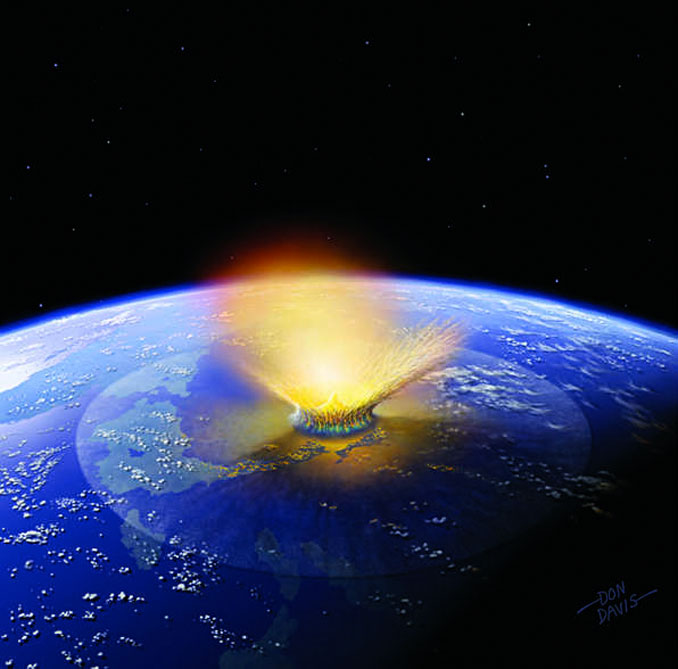
The 10-kilometre-wide (6-mile-wide) asteroid that wiped out the dinosaurs in a mass extinction event 66 million years ago likely originated in the outer half of the main asteroid belt between Mars and Jupiter, researchers say, a region previously thought to produce few large impactors.
Based on known historical impacts, computer modelling and theoretical analyses, scientists at the Southwest Research Institute concluded large impacts from asteroids in outer half of the belt between Mars and Jupiter occur at least 10 times more frequently than had been thought.
The asteroid believed to have killed off the dinosaurs smashed into what is now Mexico’s Yucatan peninsula, blasting out a now buried 90-mile-wide crater known as Chicxulub.
Core samples indicated the impacting body was similar in composition to carbonaceous chondrite meteorites. While carbonaceous chondrites are relatively common, none are close to the size needed for a Chicxulub-class event.
“We decided to look for where the siblings of the Chicxulub impactor might be hiding,” said David Nesvorný, lead author of a paper describing the research in the journal Icarus.
Using NASA’s Pleaides Supercomputer, the team tracked the trajectories 130,000 simulated asteroids in the belt between Mars and Jupiter. The analysis was based on modelling of thermal forces that, over eons, can nudge bodies into dynamical “escape hatches” where the gravitational influence of other planets in the solar system can push them into orbits that pass near Earth.
To the team’s surprise, the results showed 10-kilometre-wide bodies in the outer half of the main asteroid belt hit Earth at least 10 times more often than previously thought – once every 250 million years or so on average.
“This result is intriguing not only because the outer half of the asteroid belt is home to large numbers of carbonaceous chondrite impactors, but also because the team’s simulations can, for the first time, reproduce the orbits of large asteroids on the verge of approaching Earth,” said co-author Simone Marchi. “Our explanation for the source of the Chicxulub impactor fits in beautifully with what we already know about how asteroids evolve.”



